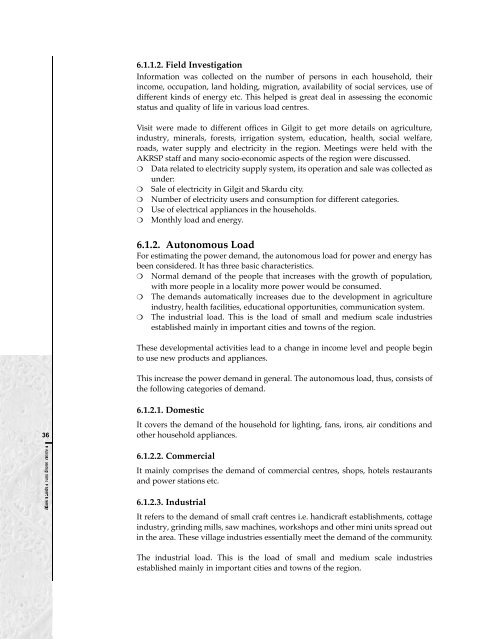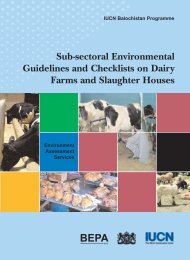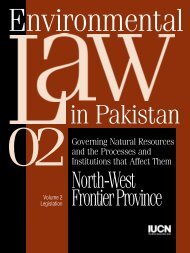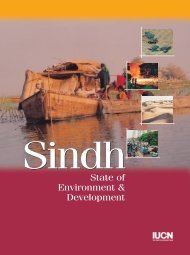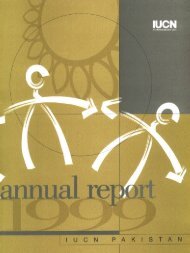Energy - IUCN
Energy - IUCN
Energy - IUCN
You also want an ePaper? Increase the reach of your titles
YUMPU automatically turns print PDFs into web optimized ePapers that Google loves.
6.1.1.2. Field Investigation<br />
Information was collected on the number of persons in each household, their<br />
income, occupation, land holding, migration, availability of social services, use of<br />
different kinds of energy etc. This helped is great deal in assessing the economic<br />
status and quality of life in various load centres.<br />
Visit were made to different offices in Gilgit to get more details on agriculture,<br />
industry, minerals, forests, irrigation system, education, health, social welfare,<br />
roads, water supply and electricity in the region. Meetings were held with the<br />
AKRSP staff and many socio-economic aspects of the region were discussed.<br />
m Data related to electricity supply system, its operation and sale was collected as<br />
under:<br />
m Sale of electricity in Gilgit and Skardu city.<br />
m Number of electricity users and consumption for different categories.<br />
m Use of electrical appliances in the households.<br />
m Monthly load and energy.<br />
6.1.2. Autonomous Load<br />
For estimating the power demand, the autonomous load for power and energy has<br />
been considered. It has three basic characteristics.<br />
m Normal demand of the people that increases with the growth of population,<br />
with more people in a locality more power would be consumed.<br />
m<br />
m<br />
The demands automatically increases due to the development in agriculture<br />
industry, health facilities, educational opportunities, communication system.<br />
The industrial load. This is the load of small and medium scale industries<br />
established mainly in important cities and towns of the region.<br />
These developmental activities lead to a change in income level and people begin<br />
to use new products and appliances.<br />
This increase the power demand in general. The autonomous load, thus, consists of<br />
the following categories of demand.<br />
36<br />
6.1.2.1. Domestic<br />
It covers the demand of the household for lighting, fans, irons, air conditions and<br />
other household appliances.<br />
6.1.2.2. Commercial<br />
It mainly comprises the demand of commercial centres, shops, hotels restaurants<br />
and power stations etc.<br />
6.1.2.3. Industrial<br />
It refers to the demand of small craft centres i.e. handicraft establishments, cottage<br />
industry, grinding mills, saw machines, workshops and other mini units spread out<br />
in the area. These village industries essentially meet the demand of the community.<br />
The industrial load. This is the load of small and medium scale industries<br />
established mainly in important cities and towns of the region.


